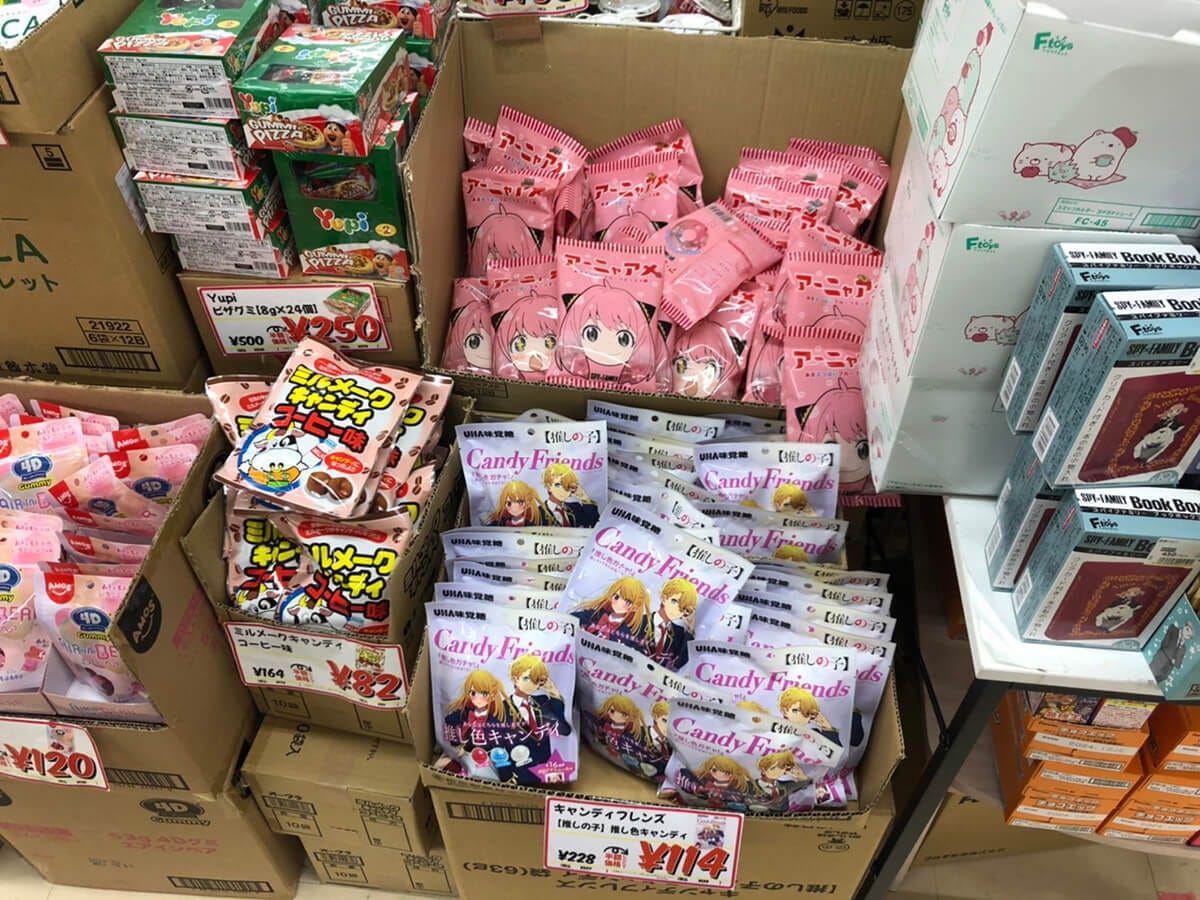Sony renews focus on anime IP creation
Plus: Anime merchandise flood discount stores; Saudi manga company opens Japan office; Anime fans spend above the average credit card holder; and more
This is your weekly Animenomics briefing, covering the business of anime and manga. Today is Wednesday, May 29, 2024.
In case you missed it: Bandai Namco Filmworks has commissioned a new Ghost in the Shell anime production, animated at Science Saru, for release in 2026.
The announcement came just days after the revelation that film distributor Toho, which has grown its anime portfolio, has agreed to acquire Science Saru as a subsidiary.
Sony develops anime production software for studios

Sony announced at its annual corporate strategy meeting that it’s developing an anime production software to improve production efficiency and quality at its anime studios, A-1 Pictures and CloverWorks.
Why it matters: Sony’s increased focus on intellectual property creation in anime means that studios will face pressure to produce more works with existing human resources.
The details: Sony told investors last week that A-1 Pictures and CloverWorks will begin trials of the software, called AnimeCanvas, this fiscal year.
AnimeCanvas is being developed in-house by engineers at Sony Music, under which anime production planning subsidiary Aniplex resides.
“We hope to be able to offer [AnimeCanvas] to other studios in the future,” Sony chief operating officer and chief financial officer Hiroki Totoki said.
The bigger picture: Sony’s anime strategy follows the same development pattern of its own distribution portal and in-house IPs for video games, technology news outlet ITmedia reports.
The PlayStation Network, originally launched in 2006 as a video game distribution network for PlayStation consoles, now serves entertainment content in 181 countries and supports 31 currencies.
What they’re saying: “By extending core functions based on this network infrastructure, such as accounts, payments, data infrastructure and security, to the growing Crunchyroll service, we plan to develop it into an engagement platform for the Sony Group,” Totoki said of Sony’s anime streaming service.
Anime merchandise pile up at Japanese discount stores
Japanese discount stores are experiencing a glut in anime-related merchandise as retailers and consumer product manufacturers seek a slice of the pie in the anime market boom, says an op-ed in the Daily Shincho web newsmagazine.
Why it matters: The surplus in anime merchandise is a sign that the anime boom can also have its limits when it comes to customer retention.
What’s happening: Photos taken by the Daily Shincho show anime merchandise from popular titles like Spy × Family, Oshi no Ko, and Demon Slayer being sold for as much as 80 percent below their original retail price.
The op-ed’s author alleges that overproduction in the anime industry causes the popularity of an anime series to slump in between seasons as consumers move on to other trending titles.
If a popular series is only broadcast for 12–13 episodes, manufacturers face a short time window to make and market merchandise before consumers lose interest.
Yes, but: More discounted anime merchandise could also mean there is a growing mismatch between desired products and what’s actually being sold.
One convenience store owner interviewed by Daily Shincho says some anime products still sell well even if most don’t fly off the shelves.
Zoom out: Merchandise revenue in the anime industry grew 34 percent between 2018 and 2022, according to Association of Japanese Animations data.
As inbound travelers return to Japan after the end of COVID-19 pandemic-related restrictions, the association expects anime merchandise sales to grow even further.
Clippings: Manga Arabia opens subsidiary in Japan

Riyadh-based Manga Arabia, a Saudi Arabian manga publisher, has launched a subsidiary in Japan to facilitate business with Japanese publishers and to promote the development of Saudi content into manga format. (Arab News Japan)
Social media giant TikTok made a donation to the Nippon Anime & Film Culture Association to support development of a skills evaluation exam for animators. It’s also launching an initiative to generate interest in anime work. (Press release)
Private broadcaster Fuji Television has partnered with IT services company Tech Mahindra to support the licensing and localization of Fuji TV’s content library of anime and dramas to streaming and TV platforms in India. (Advanced Television)
Yes, but: Even with India’s entertainment market projected to grow 30 percent by 2026, the country’s low per capita income creates a challenging profit environment for anime companies. (The Yomiuri Shimbun)
Six anime songs were among last year’s top ten songs that earned the most music royalties in Japan, according to data compiled by the Japanese Society for Rights of Authors, Composers, and Publishers. (The Nikkei)
Zoom in: Foreign royalties grew 12 percent over the previous year to a record ¥2.1 billion (US$13.3 million), driven by demand for music from Naruto.
Dwango’s Niconico video sharing service, which is popular among fans of anime and video games, reveals that ad blocking tools cost the service more than ¥100 million (US$640,000) annually in lost advertising revenue. (Oricon News)
Hayao Miyazaki plans potential new creative project
“It’s boring to keep doing old works, so I told him to make a new one, so he’s working on that right now. I don’t know if it will really become the next work, but it’s a nostalgic adventure drama, and I’m looking forward to it.”
— Goro Miyazaki, anime film director, speaking about his father, Hayao Miyazaki
Context: At a Ghibli Museum press event, the younger Miyazaki told Japanese media that his father, director Hayao Miyazaki, has been creating dioramas of scenes from his previous films for the museum as a way to kill time after finishing production on The Boy and the Heron.
The Ghibli Museum opened an exhibition on animation layouts from The Boy and the Heron last weekend, which includes a diorama with art drawn by the elder Miyazaki.
Credit card issuer earns higher profit from anime fans
Marui Group is best known in Japan for its chain of OIOI department stores, but fans of anime, manga, and video game are also becoming an important customer base in the group’s credit card business.
Why it matters: Anime, manga, and video game collaboration cards are now the second most popular type of credit card issued by Marui’s Epos Card subsidiary.
Marui Group, which issued an early version of the credit card in 1960, helped popularize the payment method in the country.
By the numbers: About 350,000 people who signed up for an Epos credit card between April 2023 and March 2024 asked for an anime, manga, or video game co-branded card, Marui reported in its most recent filings.
This number represents 43 percent of new credit card registration at Epos in the last fiscal year, up 6 percentage points from the previous year.
Marui’s current five-year plan targets 1 million cardholders of anime, manga, and video game co-branded cards by 2026.
The intrigue: Customers who own co-branded cards generate two to seven times more profit than ordinary cardholders, Marui says.
Proposals for brand collaborations come not only from Epos, but also from other Marui employees, such as those working in the department stores.
Animenomics is an independently-run and reader-supported publication. If you enjoyed this newsletter, consider sharing it with others.





It's crazy that anime cardholders spend 2-7 times more money than a typical cardholder. I wonder why that is, do anime fans have higher income or just more prone to go into debt